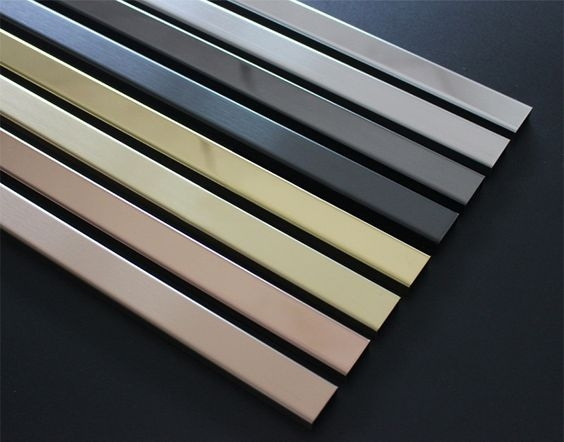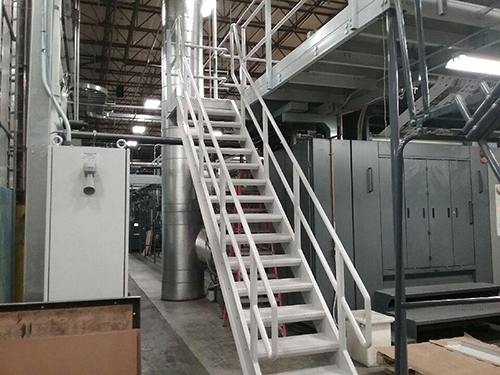English


Views: 222 Author: Tomorrow Publish Time: 2025-07-09 Origin: Site











Content Menu
● Understanding Stainless Steel and Its Challenges
● Types of Stainless Steel Coatings
>> 2. Antibacterial and Antiviral Coatings
>> 3. Fingerprint-Resistant Coatings
>> 4. Ceramic and Oxide Coatings
● Key Properties to Consider in Stainless Steel Coatings
● Applications of Stainless Steel Coatings
● Innovations in Stainless Steel Coatings
● FAQ
>> 1. What is the most durable coating for stainless steel?
>> 2. Can stainless steel coatings prevent rust completely?
>> 3. Are antibacterial coatings safe for food processing equipment?
>> 4. How often should stainless steel coatings be reapplied?
>> 5. Do coatings affect the appearance of stainless steel?
Stainless steel is renowned for its corrosion resistance, strength, and aesthetic appeal, making it a preferred material in industries ranging from construction to food processing. However, even stainless steel can benefit significantly from specialized coatings that enhance its durability, protect against environmental damage, and extend its service life. This article explores the best stainless steel coatings available, their properties, benefits, and applications to help you choose the right solution for enhanced durability.

Stainless steel contains chromium, which forms a passive oxide layer that protects it from rust and corrosion. Despite this inherent resistance, stainless steel can still suffer from wear, chemical attack, oxidation, and surface damage in harsh environments. Factors such as exposure to saltwater, industrial pollutants, abrasion, and extreme temperatures can degrade its surface over time.
To combat these challenges, coatings are applied to stainless steel surfaces to provide an additional barrier and improve performance. The choice of coating depends on the specific application, environmental conditions, and desired properties such as hardness, corrosion resistance, and aesthetic finish.
Thermal spray coatings involve spraying molten or semi-molten materials onto the stainless steel surface to form a dense, protective layer. These coatings offer:
- Excellent oxidation resistance, even at elevated temperatures.
- Superior hardness and wear resistance, protecting against abrasion and fretting.
- Resistance to chemical attack and cavitation damage.
- High bonding strength with low porosity, ensuring durability.
- Cost-effectiveness compared to other carbide coatings.
Common materials used in thermal spray coatings include chromium oxide (Cr2O3), which extends repair intervals and reduces maintenance needs. This technology is widely used in industrial machinery and components exposed to harsh conditions.
Thermal spray coatings can be customized by varying the sprayed material and process parameters to meet specific performance needs. For example, tungsten carbide-based coatings provide exceptional wear resistance, while ceramic-based coatings excel in high-temperature environments. The versatility of thermal spray technology makes it a top choice for enhancing stainless steel durability.
In environments where hygiene is critical, such as food processing and healthcare, stainless steel surfaces are often coated with antibacterial or antiviral agents. These coatings:
- Inhibit the growth of harmful bacteria and viruses.
- Enhance food safety by reducing contamination risks.
- Can be combined with stainless steel grades that inherently possess antimicrobial properties.
Such coatings are essential in maintaining sanitary conditions and are increasingly important in public health contexts. The coatings often incorporate silver ions, copper compounds, or other biocidal agents that disrupt microbial cell membranes and prevent biofilm formation. This not only protects the surface but also reduces the risk of cross-contamination in sensitive environments.
Stainless steel surfaces, especially in consumer products and architectural applications, are prone to fingerprint marks that degrade appearance. Fingerprint-resistant coatings:
- Improve corrosion resistance by preventing oils and salts from penetrating the surface.
- Maintain a clean, polished look with less frequent cleaning.
- Often incorporate hydrophobic or oleophobic properties.
These coatings contribute to both aesthetic appeal and functional durability. They are particularly popular in kitchen appliances, elevator panels, and public fixtures where appearance and hygiene are important. By repelling oils and moisture, these coatings reduce the accumulation of dirt and fingerprints, making maintenance easier and extending the life of the stainless steel finish.
Ceramic coatings, including those based on chromium oxide, offer:
- High hardness and scratch resistance.
- Excellent thermal stability.
- Strong chemical resistance.
These coatings are applied using thermal spray or chemical vapor deposition techniques and are suitable for high-temperature applications and components subject to intense wear. Ceramic coatings form a hard, inert barrier that protects stainless steel from mechanical damage and chemical corrosion. They are widely used in aerospace, automotive, and power generation industries where components face extreme conditions.
Polymer coatings provide a flexible, corrosion-resistant barrier. They are often used when electrical insulation or chemical resistance is required without adding significant weight. While not as hard as ceramic coatings, polymers protect against moisture and chemical exposure effectively.
Polymer coatings can be tailored with additives to improve UV resistance, abrasion resistance, and chemical inertness. They are commonly used in marine environments, chemical processing plants, and electrical enclosures. Their ease of application and repair make them a practical choice for many stainless steel applications.

When selecting a coating for stainless steel, consider the following properties:
| Property | Importance for Durability |
|---|---|
| Corrosion Resistance | Prevents rust and chemical degradation |
| Hardness and Wear Resistance | Protects against abrasion and mechanical damage |
| Oxidation Resistance | Maintains integrity at high temperatures |
| Bonding Strength | Ensures coating adheres well without peeling |
| Porosity | Low porosity reduces pathways for corrosive agents |
| Antimicrobial Properties | Essential for hygiene-sensitive applications |
| Aesthetic Finish | Maintains appearance and reduces maintenance |
Understanding these properties helps in matching the coating to the specific demands of the application, ensuring optimal performance and longevity.
- Industrial Equipment: Thermal spray coatings protect machinery parts from wear and corrosion.
- Food Processing: Antibacterial coatings ensure sanitary surfaces.
- Architectural Elements: Fingerprint-resistant and decorative coatings maintain appearance.
- Medical Devices: Antimicrobial coatings reduce infection risks.
- Automotive and Aerospace: High-strength, oxidation-resistant coatings improve component life.
- Marine Environments: Polymer coatings protect against saltwater corrosion.
- Electronics: Insulating polymer coatings safeguard sensitive components.
Each application benefits from coatings tailored to its unique environmental and operational challenges.
Coatings extend the lifespan of stainless steel by reducing the frequency of repairs and maintenance. For example, chromium oxide coatings can significantly delay degradation, minimizing downtime and costs. However, coatings must be applied correctly and inspected regularly to maintain their effectiveness.
Proper surface preparation before coating application is critical to achieving strong adhesion and long-lasting protection. This includes cleaning, roughening, and sometimes applying primer layers. After application, routine inspections can detect early signs of wear or damage, allowing timely repairs or recoating.
Environmental factors such as UV exposure, chemical contact, and mechanical stress influence coating longevity. Selecting coatings suited for the specific environment and maintaining them properly ensures maximum durability.
Recent advances in coating technology have introduced multifunctional coatings that combine durability with other benefits such as self-cleaning, anti-fouling, and enhanced thermal management. Nanotechnology enables ultra-thin coatings with superior performance, reducing material usage and weight.
Research into environmentally friendly coatings focuses on reducing volatile organic compounds (VOCs) and hazardous substances, promoting sustainable manufacturing practices. These innovations continue to expand the possibilities for protecting stainless steel in ever more demanding applications.
Choosing the best stainless steel coating depends on the specific environmental challenges and performance requirements. Thermal spray coatings, ceramic oxides, antibacterial layers, and fingerprint-resistant finishes each offer unique advantages that enhance durability and functionality. Proper application and maintenance of these coatings ensure prolonged service life, reduced maintenance, and improved safety and aesthetics. By understanding the properties and benefits of different coatings, industries can optimize stainless steel performance for demanding applications.
The most durable coatings are typically thermal spray coatings using chromium oxide, which provide excellent hardness, corrosion resistance, and oxidation protection, especially in high-temperature and abrasive environments.
While stainless steel coatings greatly reduce the risk of rust and corrosion by adding protective barriers, complete prevention depends on environmental factors and maintenance. Coatings significantly slow down corrosion processes.
Yes, antibacterial coatings used on stainless steel in food processing are designed to be safe and effective in reducing bacterial contamination without affecting food safety.
The reapplication frequency depends on the coating type and exposure conditions. Thermal spray coatings can last several years, while polymer or antibacterial coatings may require more frequent renewal based on wear and hygiene standards.
Some coatings, like fingerprint-resistant and decorative coatings, enhance appearance by reducing smudges and providing color or gloss. Others, like thermal spray coatings, may alter surface texture but improve durability.
Stainless Steel Pipes Vs Galvanized Pipes: Durability And Cost Analysis
Comparing Stainless Steel Pipes And PVC Pipes: What You Need To Know?
Stainless Steel Pipes Vs Copper Pipes: Pros And Cons for Industrial Use
Seamless Stainless Steel Pipes Vs Welded Pipes: Key Differences Explained
Stainless Steel Pipes Vs Carbon Steel Pipes: Which One Suits Your Project?
Stainless Steel Sheets Vs Galvanized Steel Sheets: Pros And Cons Compared
Stainless Steel Sheets Vs Aluminum Sheets: Which One Suits Your Project?
Cold Rolled Vs Hot Rolled Stainless Steel Sheets: Key Differences Explained
How To Choose Stainless Steel for Industrial Guardrails And Railings?
